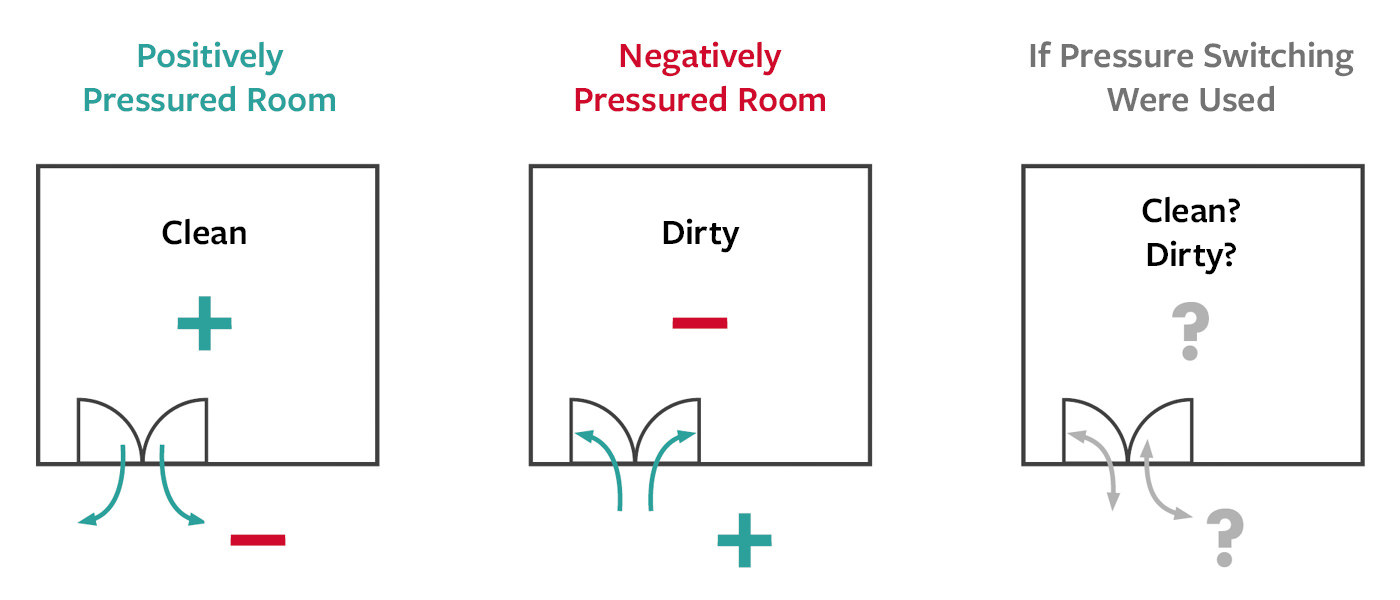Air Pressure Switching & ASHRAE 170 Revisited
By Karpinski Engineering | Feb 15, 2018

In some hospitals today, you can see rooms with wall switches that let staff change the air pressure between positive and negative.
This design feature has roots in previous versions of ASHRAE Standard 170: Ventilation of Health Care Facilities. Because of how earlier versions of the Standard were written, some interpreted it as ambiguous in terms of whether pressure switching was permitted.
We have written about the question previously. Questions continue to arise, and the answer is important for patient safety and compliance.
Can healthcare facilities use air pressure switching?
The short answer is “no.” ASHRAE 170 eliminated any ambiguity, publishing Addendum E of Standard 170-2013: “Controls intended to switch the required pressure relationships between spaces from positive to negative, and vice versa, shall not be permitted.” (Download the addendum for free on ASHRAE.com.)
ASHRAE 170 is a standard under continuing maintenance, and the addendum is now incorporated into the 2017 version.
Why is pressure switching prohibited?
Patient safety is the central reason. In terms of infection control, a positively-pressured room is clean, and a negatively-pressured room is dirty. If you can change the air pressure by flipping a switch, how do you guarantee that a positively-pressured room is actually clean?

For healthcare facilities that have existing rooms using pressure switches, we recommend removing them and maintaining the appropriate pressure relationship permanently. Even if the switches are not in use, their presence could raise concerns for surveyors. Organizations also run the risk of someone flipping the switch without realizing the consequences.
What are a healthcare facility’s options?
Given economics and typical patient procedure volumes, a healthcare facility might not use a specific type of room frequently enough to warrant a dedicated space (e.g., a bronchoscopy room).
The Standard leaves room for combining certain types of spaces. Either a positive or a negative space can be paired with an N/R space.
“N/R” means there’s no air pressure requirement for the space. It can be positive, negative, or neutral in relation to adjacent spaces. Examples of N/R spaces include endoscopy rooms and recovery rooms. In practice, here’s how it works:
- A space with a positive pressure requirement and a space with an N/R designation can be combined. That space would need to be positively pressured. One example would be an operating room (which is positive) and a gastrointestinal endoscopy procedure room (which is N/R).
- Alternatively, a space with a negative pressure requirement and a space with an N/R designation can be combined. That space would need to be negatively pressured. An example would be pairing bronchoscopy (which is negative) and a gastrointestinal endoscopy procedure room (which is N/R). With this particular example, ASHRAE 170 notes that if this space is designated in the organization’s operational plan to be used for both bronchoscopy and gastrointestinal endoscopy, the design parameters for the bronchoscopy room need to be used.
- A space with a positive pressure requirement and a space with a negative pressure requirement cannot be combined.